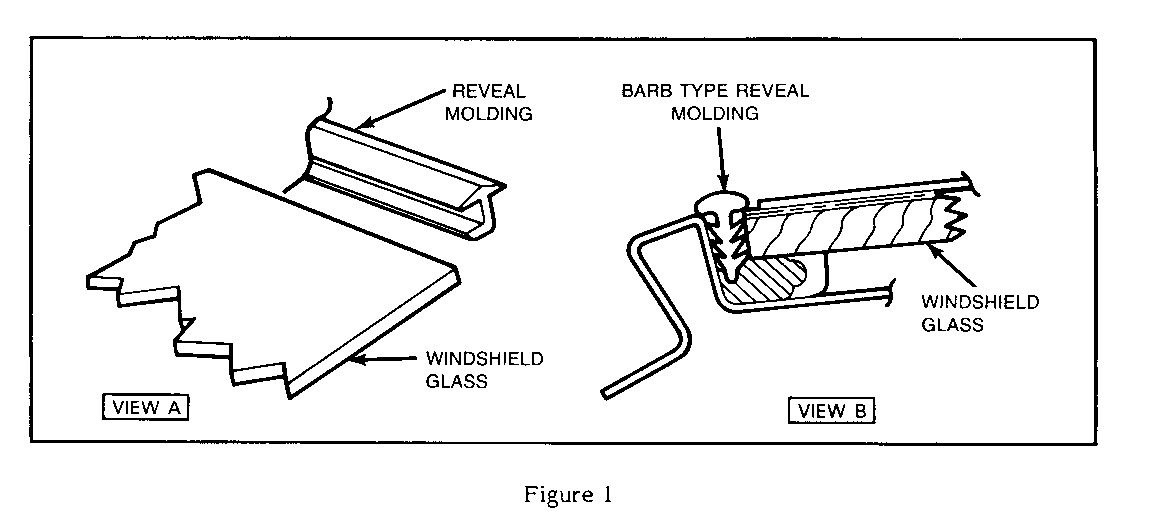WINDSHIELD & R/WINDOW REVEAL MOLDING SERVICE AND REPAIR

MODELS AFFECTED: 1986-87 RIVIERAS
The 1986 and 1987 Riviera windshield and rear window reveal molding is installed under the edge of the glass during vehicle assembly (refer to illustration, View A). If replacement of the reveal molding is required, the past design barbed molding, Part Number 20355447 (illustration, View B), is used along with the following installation procedure:
1. Remove the original reveal molding by prying one end of the molding 75mm (3") away from the body with a flat bladed tool. Grasp the molding by hand and slowly pull it away from the body. The lower edge of the molding (under the glass) will tear away from the outer edge and remain in the gap between the glass and body.
2. The portion of the original molding that remained in the gap can cause high spots which keep the service molding from seating deep enough, preventing proper molding fit. It is necessary to pre-fit the service molding as follows:
o Install the service molding into position PRIOR to applying urethane adhesive.
o Note positions where the molding does not fit deep enough to allow a flush fit to the glass and body. Also note how high those positions are.
o Remove excess urethane from the glass to body channel in the area where the molding does not fit deep enough.
o If the molding still does not fit properly, a small portion of the barbed shank can be cut from the high positions to allow for proper molding fit.
3. Apply clear urethane primer (from kit, Part Number 9636067, or equivalent) to the barbed shank of the molding.
4. Apply urethane in the area between the glass and body.
5. Starting from the top center of the glass, press the replacement molding into place. Tape can be applied to keep the molding in place while the urethane sets up (hardens). Remove the tape after the urethane has set up. NOTE: Applying warm water to the molding will reduce the urethane set up time.
For warranty purposes, use Labor Operation B7550 for 0.3 hours to replace the windshield molding; and, B8520 for 0.5 hours to replace the rear window molding.

General Motors bulletins are intended for use by professional technicians, not a "do-it-yourselfer". They are written to inform those technicians of conditions that may occur on some vehicles, or to provide information that could assist in the proper service of a vehicle. Properly trained technicians have the equipment, tools, safety instructions and know-how to do a job properly and safely. If a condition is described, do not assume that the bulletin applies to your vehicle, or that your vehicle will have that condition. See a General Motors dealer servicing your brand of General Motors vehicle for information on whether your vehicle may benefit from the information.
